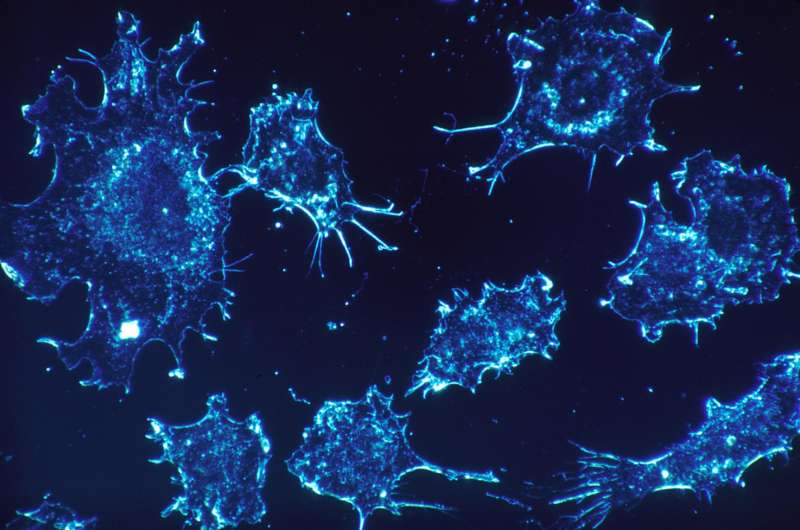Credit: CC0 Public Domain
A study by researchers at the National Cancer Institute (NCI), part of the National Institutes of Health, offers new insight into genetic alterations associated with osteosarcoma, the most common cancerous bone tumor of children and adolescents. The researchers found that more people with osteosarcoma carry harmful, or likely harmful, variants in known cancer-susceptibility genes than people without osteosarcoma. This finding has implications for genetic testing of children with osteosarcoma, as well as their families.
The study was published March 19, 2020, in JAMA Oncology.
"With this study, we wanted to find out how many people with osteosarcoma may have been at high risk for it because of their genetics," said Lisa Mirabello, Ph.D., of NCI's Division of Cancer Epidemiology and Genetics (DCEG), who led the research. "We not only learned that at least a quarter of the people in the study with osteosarcoma had a variant in a gene known to predispose someone to cancer, we also uncovered variants that had never before been associated with this cancer."
In the study, the researchers looked for harmful (or likely harmful) variants in 238 known cancer-susceptibility genes in DNA samples from 1,244 people with osteosarcoma and compared the frequency of such variants with that in people in a cancer-free control group. They identified a harmful or likely harmful variant in a known cancer-susceptibility gene in 28% of the people with osteosarcoma. By contrast, only 12% of people in the cancer-free control group had such a variant.
When the authors looked at a subset of 166 genes that are known to be inherited in an autosomal dominant fashion—that is, where inheriting one alteration from one parent is sufficient to increase cancer risk—they saw harmful or likely harmful variants in about 18% of the patients but only 5% of controls. And another 25% of the patients had a rare variant of uncertain significance that was predicted to be harmful.
Patients who had harmful variants were younger at age of osteosarcoma diagnosis, on average, than patients who did not (15.3 years versus 16.9 years). In addition, the youngest children in the study (ages 0-10 years) had the highest prevalence of harmful variants.
If a child is found to have a gene variant associated with osteosarcoma, the authors say that genetic testing may be warranted for the child's family members, who may also carry the variant. Family members who have the variant could undergo screening for the cancers associated with that variant, potentially leading to earlier detection.
"The idea is, if you have a new patient with osteosarcoma, we found that a quarter of them have a [harmful] variant in a gene associated with increased risk of other cancers," said Sharon Savage, M.D., senior author of the study, also of DCEG. "Genetic testing of the patient likely makes sense, because they could be at risk of other cancers, and they might have family members who carry the variant who might be at risk of other cancers."
Because osteosarcoma is a rare cancer, the researchers assembled case samples from 10 international research centers, making this the largest collection to date of a pediatric solid cancer evaluated for cancer-susceptibility gene variants.
The researchers found harmful or likely harmful variants in several cancer-susceptibility genes that hadn't been associated with osteosarcoma—or, indeed, pediatric cancers—before. Because the biological function for the variants newly found to be associated with osteosarcoma remain unknown, this could open new areas of research related to cancer susceptibility.
This study is part of a larger pediatric cancer susceptibility research program at NCI through which researchers are studying common and rare causes of osteosarcoma and other pediatric cancers. In earlier research, Dr. Mirabello found that TP53 gene variants, which are associated with the cancer predisposition disease Li-Fraumeni Syndrome, were more common than previously thought in children and adolescents with osteosarcoma. In the current study, TP53 gene variants had the highest frequency of the harmful or likely harmful cancer-susceptibility gene variants in children with osteosarcoma, another finding that Dr. Mirabello said warrants additional research.
More information: JAMA Oncology (2020). DOI: 10.1001/jamaoncol.2020.0197
Journal information: JAMA Oncology
Provided by National Cancer Institute























